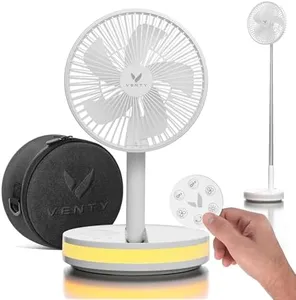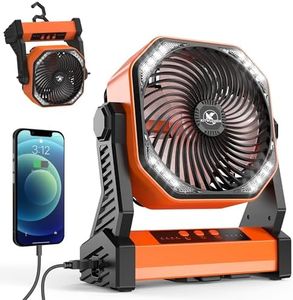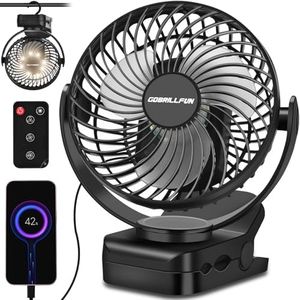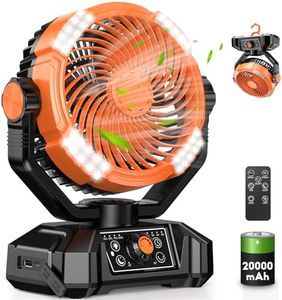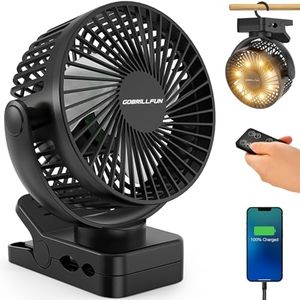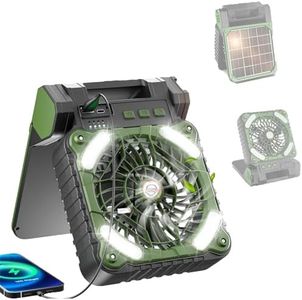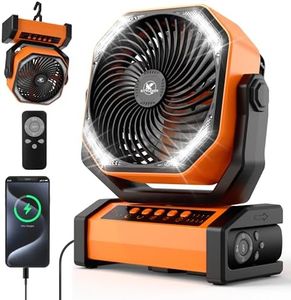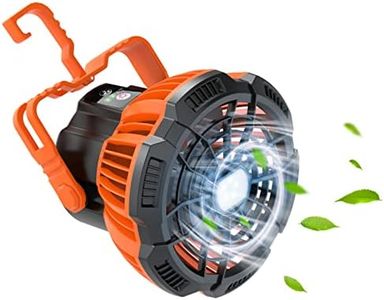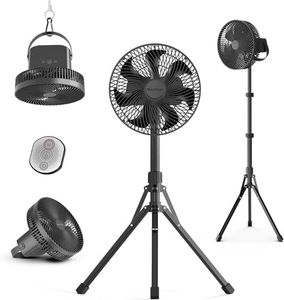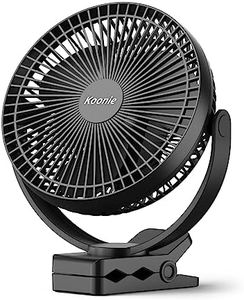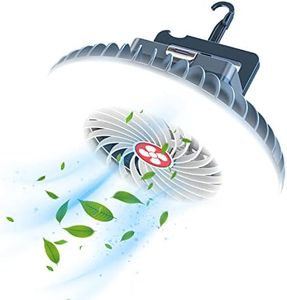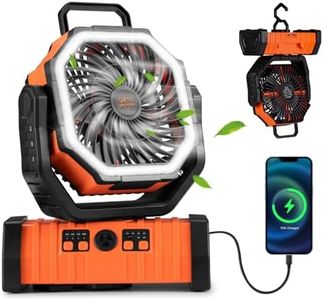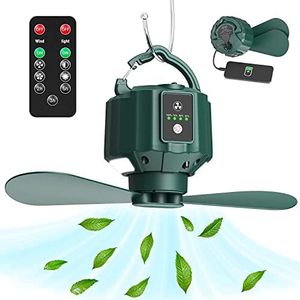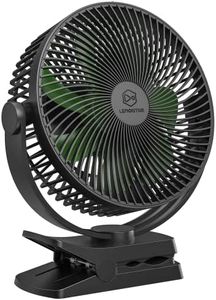We Use CookiesWe use cookies to enhance the security, performance,
functionality and for analytical and promotional activities. By continuing to browse this site you
are agreeing to our privacy policy
10 Best Camping Fans
From leading brands and best sellers available on the web.Buying Guide for the Best Camping Fans
Choosing the right camping fan can make a big difference in your comfort while outdoors. Because camping environments often lack electrical outlets and regular amenities, it's crucial to select a fan that fits your needs, whether you're in a tent, RV, or out in the open. Start by considering where and how you'll use the fan: will it be mostly for night-time cooling, air circulation in a tent, or as a portable solution during hiking breaks? By clarifying your priorities and understanding the main features, you can narrow down your options and find the best fan for your camping adventures.Power SourceThe power source refers to how the fan gets its energy—commonly batteries, rechargeable batteries, USB, or manual mechanisms. This is important because camping often means you can't rely on plugging into a wall or consistent electricity. Battery-operated fans are simple and portable for short trips, while rechargeable fans can save money over time if you have access to solar panels or power banks. Fans that use regular batteries are good if you can carry spares, but their cost can add up. USB-powered fans are convenient if you already bring portable chargers. Manual fans require no power but provide limited airflow. Consider what type of power you’ll have access to during your trip and how long you expect to use the fan each day.
Size and WeightThe size and weight affect how easy the fan will be to carry and where you can use it. Smaller, lighter fans are easy to pack and ideal for backpacking, whereas larger fans can move more air but take up more room and are better suited for car camping or stationary setups. Think about the available space in your tent or backpack and how much airflow you need: a compact fan is sufficient for solo travelers or small tents, while larger groups or big tents may benefit from a bigger model.
Airflow (CFM or Fan Speed)Airflow is often measured in cubic feet per minute (CFM) or simply described as fan speed settings. This determines how much air the fan can move and directly affects how cool or ventilated you’ll feel. Low airflow works for personal cooling in small spaces, while high airflow is better for larger tents or areas. If you’re sensitive to heat or need to circulate air in a larger tent, look for models with higher airflow ratings or multiple speed settings for flexibility.
Noise LevelThe noise level is how loud the fan operates, measured in decibels (dB) or described as quiet/silent. Loud fans can disturb sleep or the natural camping ambiance, while quieter models allow peaceful rest. Sensitive sleepers should choose fans marketed as quiet or check user feedback for noise impressions. If you only need minimal cooling or use white noise to sleep, noise may be less important.
Battery Life/RuntimeBattery life or runtime tells you how long the fan operates on a single charge or set of batteries. It's crucial for multi-day trips or situations with limited power sources. Lower runtimes are fine for a few hours of nightly use, while longer runtimes suit hot climates or continuous use overnight. Choose based on how long you expect to need cooling between recharges or battery changes.
Mounting/Placement OptionsMounting and placement features describe how and where you can position the fan—floor-standing, hanging, clip-on, or magnetic, for example. Hanging fans work well inside tents from the ceiling, clip-ons attach to poles or tables, and freestanding models can sit anywhere with flat space. Pick a fan with placement options that best match your typical camping setup to make sure you can direct airflow where you need it most.
Durability/Weather ResistanceDurability and weather resistance indicate how well the fan stands up to outdoor conditions like humidity, dust, and bumps. Some fans are built with rugged casings or sealed electronics to handle rough handling and wetter environments. If you often camp in variable weather or expect to move camp frequently, a sturdy, weather-resistant fan is ideal; for mild climates or careful campers, a standard fan may suffice.
